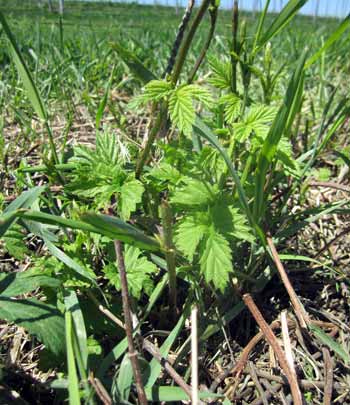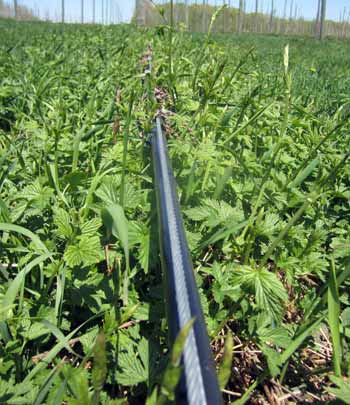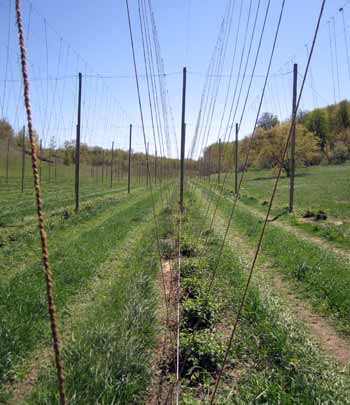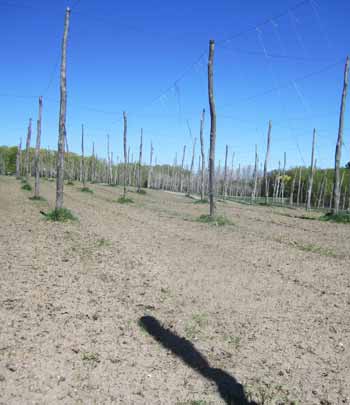Michigan hops update – May 17, 2013
Hop growers are stringing hopyards around Michigan and starting to train this year’s bines. MSU Extension will be tracking hop development this season and providing growers with relevant pest management information.
Hop bines around Michigan are knee to hip height depending on location, with most producers having already hung string in the hopyard to support this year’s bines. Growing degree day (GDD) accumulation is significantly different along the western portion of the state where the majority of hop acreage is located. So far this season we have accumulated 177 GDD50 in Traverse City, Mich., and 270 GDD50 in Hickory Corners, Mich. These differences are reflected in hop development with hop plants in Traverse City, Mich., between 12 to 24 inches and untrained. In south central and southern Michigan, bines are 36 inches or more and trained on the coconut string trellis system. Planting is still underway in northwest Michigan.


(Left) Centennial and (Right) Chinook hop development in northwest Michigan, May 15, 2013.
Photo credits: Erin Lizotte, MSU Extension
The first fertilizer and herbicide applications of the season have already been applied and those with fertigation systems will start spoon-feeding bines in the next couple of weeks. Conventional sites have had good herbicide response with clean weed strips.
Growers will be selecting which bines to train in the coming days and weeks. Keep in mind that the largest bines that emerge on plants (second leaf or older) are not necessarily the best to train. These are referred to as “bull shoots” and have a hollow center making them more susceptible to wind damage as they are more brittle and less succulent. Most crowns produce two to three bull shoots which often differ in color, have larger spaces between internodes and are more fibrous than other bines. The main function of training the bines is to prevent the side branches from tangling and growers should select three to four vigorous vines for training. The remaining vines are pruned back to the crown. Don’t forget, bines must be trained clockwise around the twine.


(Left) Most growers have hung string in the hopyards and are beginning to train bines.
(Right) Ground prepared for rhizome planting in organic hopyard. Photo credits: Erin Lizotte, MSU Extension
In the coming weeks, Michigan State University Extension recommends growers should be hanging potato leafhopper traps to detect their arrival from overwintering sites in the Gulf States and be on the lookout for mites, foliar disease and aphids.



 Print
Print Email
Email


